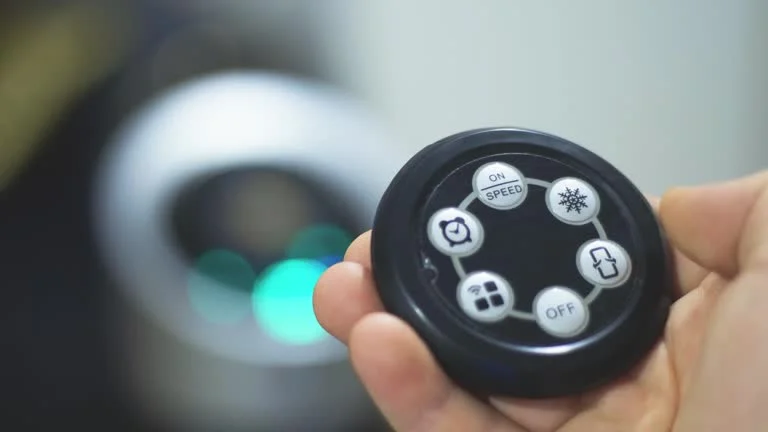Getting a replacement garage remote shouldn’t be rocket science, but somehow it often feels that way. Each brand has its own quirks, frequencies, and compatibility issues that can leave you standing in the hardware store totally confused. Garage remote control for Merlin, Steel-line, B&D, ATA systems all work differently, and picking the wrong one means you’ll be making another trip to the store. Let’s break down what you actually need to know to get the right remote the first time.
Discover More on This Topic – Don’t Miss Our Related Insight.
Merlin Systems and Their Remote Requirements
Merlin garage door openers have gone through several generations, and this matters more than you might think. The older Merlin systems from the early 2000s used fixed code technology at 433.92 MHz. These are pretty easy to replace – most universal remotes will work fine.
But here’s where it gets tricky. Newer Merlin systems use rolling code technology, which is way more secure but also more picky about compatible remotes. The MT60V, MT100EVO, and MT230EVO models all use different encoding systems. You can’t just grab any 433 MHz remote and expect it to work.
What really helped me figure this out was checking the model number on the actual motor unit, not just assuming based on when it was installed. Merlin changed their systems pretty frequently, so a 2015 installation might have an older model opener that was sitting in inventory.
Steel-Line Remote Compatibility
Steel-Line systems are interesting because they’ve used both 433 MHz and 403 MHz frequencies over the years. The frequency isn’t printed on most Steel-Line remotes, which makes replacement shopping frustrating. Most Steel-Line openers from 2010 onward use 433.92 MHz with rolling code, but the earlier ones were all over the place.
One thing that’s helped me with Steel-Line systems is that they’re generally pretty good about maintaining backward compatibility. If you’ve got a newer Steel-Line opener, it can usually learn older Steel-Line remote codes. This means you have more options when shopping for replacements.
The build quality on Steel-Line remotes is actually pretty solid too. I’ve got one that’s been through the washing machine twice and still works perfectly. Their newer smart remotes can control multiple doors and have some basic smartphone integration, though it’s not as fancy as some other brands.
B&D System Specifics
B&D (Boss & Duncan) remotes are probably the most straightforward of the bunch. They’ve stuck with 433.92 MHz for most of their systems, and their rolling code implementation is pretty standard. The CAD, Accent, and Panel-Lift systems all use very similar remote protocols.
What’s nice about B&D is they clearly mark their model numbers on both the opener and the remote. You’ll see codes like “062150” or “062151” printed right on the remote case. These numbers actually mean something – they correspond to specific encoder chips and frequency crystals inside the remote.
B&D also makes some of the most durable remotes I’ve used. The buttons have a really satisfying click, and the cases hold up well to being dropped or knocked around. They’re not the cheapest, but they last.
ATA Remote Technology
ATA systems are where things get a bit more technical. They use a proprietary rolling code system that’s really secure but can be picky about aftermarket remotes. ATA PTX-4 and PTX-5 remotes use 433.92 MHz, but the encoding is different enough that not all “universal” remotes will work properly.
Here’s something I learned the hard way – ATA systems have a limited number of remote slots in memory. If you’re adding a new remote and it won’t program, you might need to clear all the existing remotes first, then reprogram everything. It’s annoying, but it works.
ATA also makes some interesting multi-function remotes that can control garage doors, gates, and other access systems. If you’ve got multiple ATA devices, it might be worth investing in one of their combination remotes.
Universal vs Original Equipment
This is probably the biggest decision you’ll face. Original equipment remotes from the manufacturer will definitely work, but they’re usually 2-3 times more expensive than universal alternatives. Universal remotes have gotten way better in recent years – brands like Gliderol, Superlift, and Control-A-Matic make units that work with multiple systems.
The key is making sure the universal remote specifically lists compatibility with your opener model. Don’t just go by frequency – the encoding has to match too. Most good universal remotes come with clear compatibility charts that list specific opener models.
Programming is usually pretty similar across all these brands. You’ll put the opener in learn mode, press the remote button, and wait for confirmation. Some systems require you to hold buttons for specific time periods or press them in sequence, but the basic process is the same.
See What’s Trending – Our Top Featured Post This Week.






